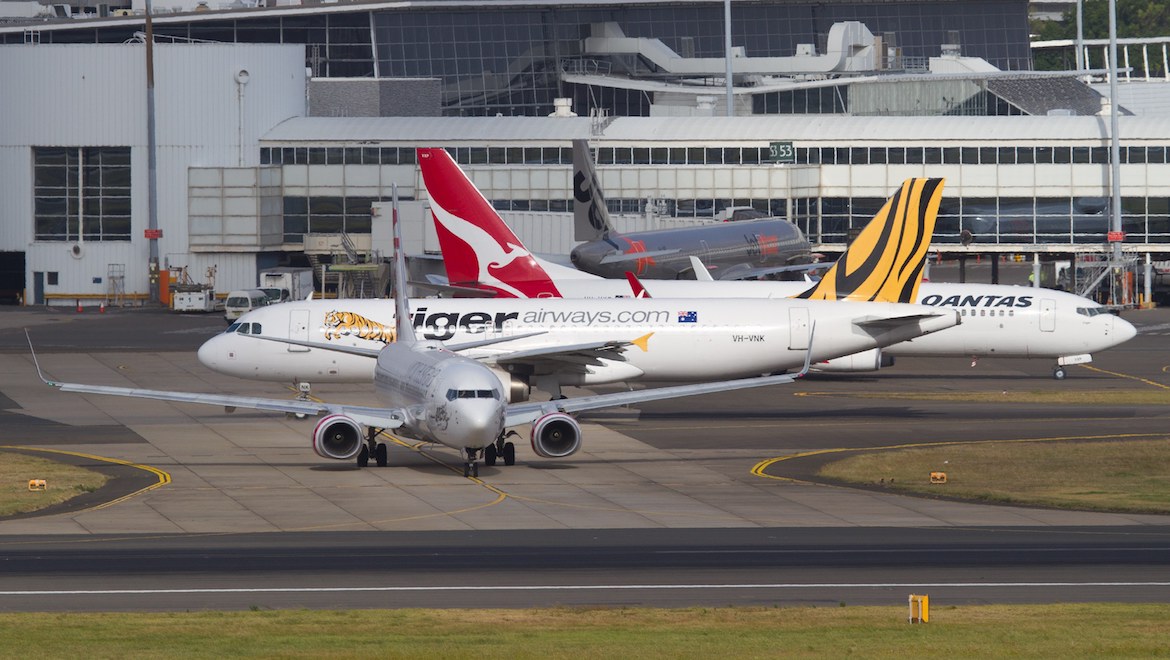
Air transport demand in Australia’s domestic market has stagnated amidst rising concerns about the country’s economic outlook, figures from the International Air Transport Association (IATA) showed.
The monthly IATA report on passenger traffic showed demand, measured in revenue passenger kilometres (RPKs), fell 1.2 per cent in June, compared with the prior corresponding period.
“Six of the past eight months have seen a small, negative annual RPK growth rate in this market, as air transport demand stagnates amidst rising concerns around the country’s economic outlook,” IATA said in its monthly air passenger monthly analysis report.
The Reserve Bank of Australia (RBA) cut the official cash rate in June and July and has revised down its economic growth forecasts for 2019 amid what governor Phillip Lowe said was weak consumption growth.
“It has become increasingly clear that the extended period of unusually slow growth in household incomes has been weighing on household spending, as has the adjustment in the housing market,” Lowe told the House of Representatives Standing Committee on Economics on August 9.
“Given this experience, the outlook for consumption continues to be the main domestic source of forecast uncertainty.”
Qantas chief executive Alan Joyce said on the sidelines of the CAPA – Centre for Aviation Australia Pacific aviation and corporate travel summit in Sydney on August 7 said there were still some domestic markets experiencing growth.
“In Western Australia we’ve added 13 per cent capacity this season because the resource sector is going back to a boom which is actually helping us quite significantly,” Joyce said.
“Even without capacity growth, there are plenty of sources of revenue growth that can continue to help improve your profitability and improve your performance.”
#Qantas CEO Alan Joyce is the first speaker at this year’s #CAPASummit in #Sydney. He says seat factors on the airline’s nonstop #Perth–#London Heathrow flight is more than 90 per cent. The route is served with 236-seat, three-class #Boeing 787-9 equipment pic.twitter.com/JX9DPrdPwJ
— World of Aviation (@the_wofa) August 6, 2019
The only country with a weaker domestic market in the latest data was Brazil, where RPKs were down 5.7 per cent year-on-year in June following a 2.7 per cent decline in May.
But unlike Australia’s cloud of economic uncertainty, Brazil’s deteriorating performance was largely attributed to the collapse in May of Avianca Brasil, the country’s fourth largest airline with around 14 per cent of the market share.
At the other end of the spectrum, Russia had the strongest domestic market with double digit RPK growth year-on year to June of 10.3 per cent on the back of lower airfares and an increase in both the number and frequency of city-pair connections. The domestic Chinese market recording healthy year-on-year growth of 8.3 per cent to June.
In spite of the failure of Jet Airways earlier this year, India had also held steady with domestic RPKs at 7.9 per cent in the period.
Globally, domestic market growth eased slightly in the year to June at 4.4 per cent, one percentage point below the growth in the international market of 5.4 per cent in the same period.
All regions recorded increases in international passenger growth, led by airlines in Africa, albeit off a small base. Africa’s total passenger traffic market share, by region of carriers in terms of RPKs, is 2.1 per cent.
Across both international and domestic markets worldwide passenger volumes remained solid, with RPKs increasing by five per cent in the year to June, up slightly from May’s 4.7 per cent year on year result.
IATA chief executive and director general Alexandre de Juniac said: “June continued the trend of solid passenger demand growth while the record load factor shows that airlines are maximizing efficiency.”
“Amid continuing trade tensions between the US and China, and rising economic uncertainty in other regions, growth was not as strong as a year ago, however.”
Industry-wide, load factors rose to a new high, as capacity growth remained moderate. Available seat kilometres (ASK) rose was up three 3.3 per cent over the year. The 84.4 per cent load factor was the highest recorded level for a June month, said IATA.










